Eukaryotic chromosome replication III
1/29
There's no tags or description
Looks like no tags are added yet.
Name | Mastery | Learn | Test | Matching | Spaced |
|---|
No study sessions yet.
30 Terms
Cell cycle control of DNA replication:
DNA replication is tightly controlled during the cell division cycle
entire genome is replicated precisely once in S phase
separation of the replicated chromatids occurs in mitosis
BOTH EVENTS ARE STRICTLY SEPARATED
What controls the start of DNA synthesis in eukaryotic cells?
cyclin-dependent protein kinase CDK complexes
These are related to
the complex of cyclin B and CDK1
that controls mitosis
Prime candidates iin vertebrates
cyclin A-CDK2
cyclin E-CDK2 complexes
What is also important:
Dbf4-Cdc7 protein kinase DDK
crucial for origin activation
and
initiation of DNA replication
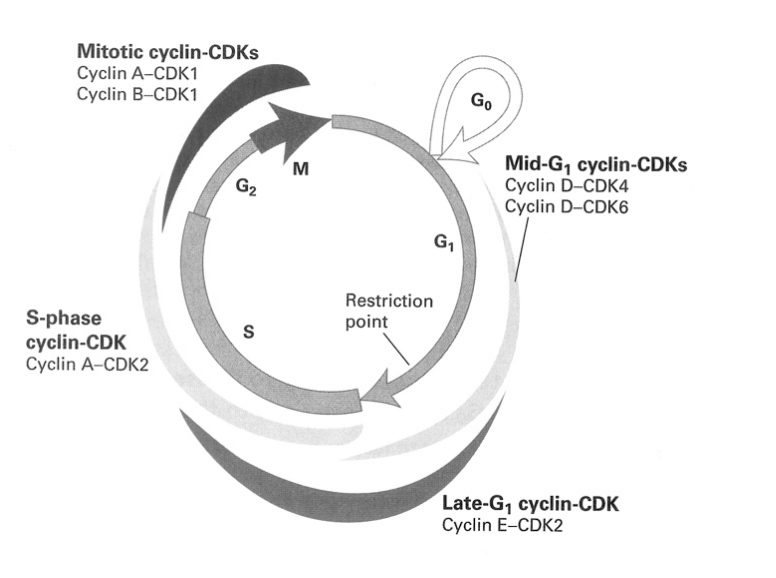
Once replication is initiated at an origin…
re-initiation is prevented
stops it happening twice in a replication fork
how…?
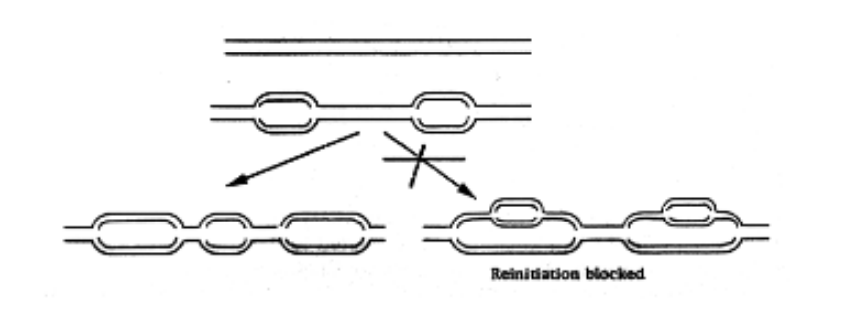
How is re-initiation of DNA replication prevented
at each origin is the essential pre-replication complex (pre-RC)
replication licence
→ assembled following exit from mitosis
What does it consist of
ORC
cdc6
Cdt1
MCM (minichromosome maintenance) proteins
required for initiation
What happens after DNA replication is initiated
pre-RC is dismantled
Cdc6 and Cdt1 are degraded by proteolysis
MCM complexes are displaced from replication DNA
→ reformation of new pre-RCs and re-initiation of DNA rep are therefore prevented
until exit from mitosis
First level of control is exerted by CDKs:
High CDK activity is essential for origin firiing in S phase
and for preventing pre-RC re-assembly in S and G2
CDK activities are low in G1
This basic mechanism is conserved from yeast to humans…
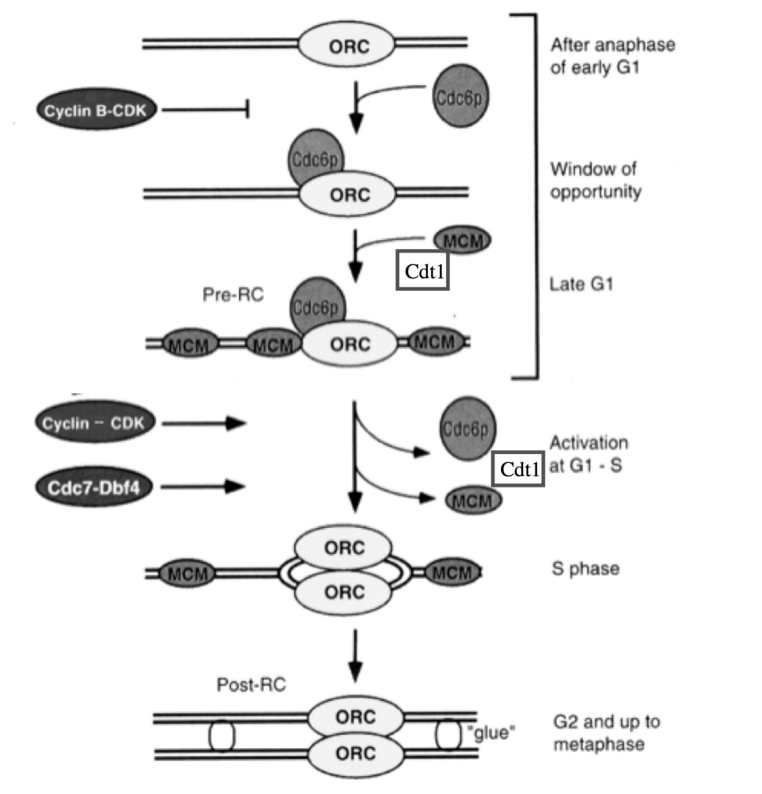
Second indpenendent level of control (found in mutlicellular organism) involves…
Cdt1
protein Geminin
Geminin
binds to and inactivates remaining Cdt1 in S and G2 phase
prevents re-assembly of new pre-RCs after initiation of DNA replication
In mitosis, for the subsequent G1 phase…
Geminin is degraded
allows Cdt1 to assemble new pre-RCs
for the subsequent G1 phase
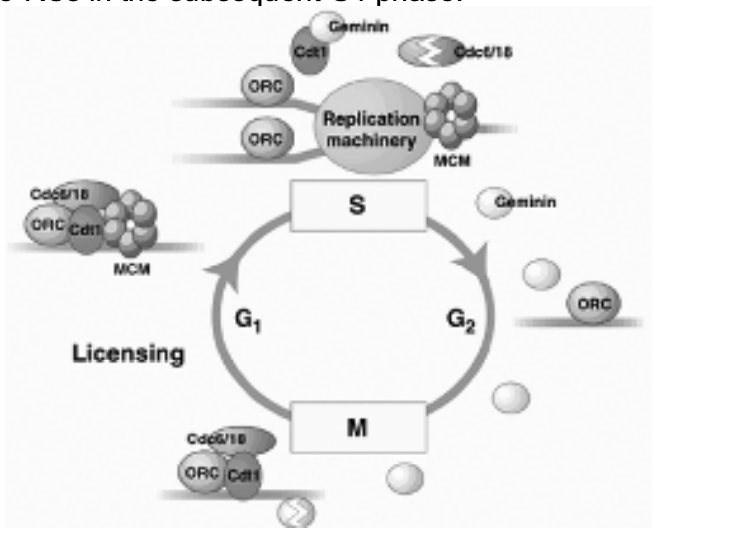
Sister chromatid cohesion: newly replicated sister chromatin fibres are …
physically held together until the metaphase to anaphase transition in mitosis
How is this sister chromatid cohesion mediated
by cohesins
→ proteins are belonging to the class of ;structural maintenance of chromosomes’ proteins (SMCs)
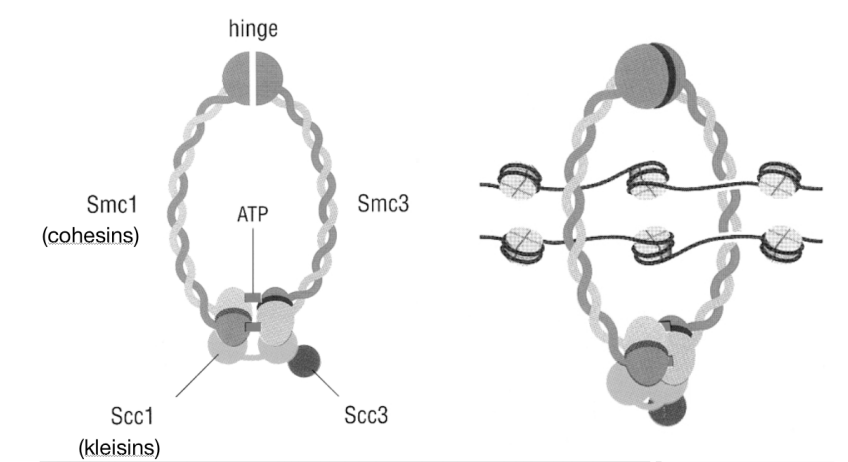
Chromosome assembly: during chromosome replication in S phase, what must happen
entire genomic DNA must be replicated
Chromatin strucutrre also replication
How does this happen?
in front of advancing replication form, chromatin partially diassembles
parental ucleosoms are transfered past the replication fork machinery
their histones are recycled
new histones are synthesised during S phase of the cell cycle
assembled into nucleosomes on replicated DNA by assembly factors
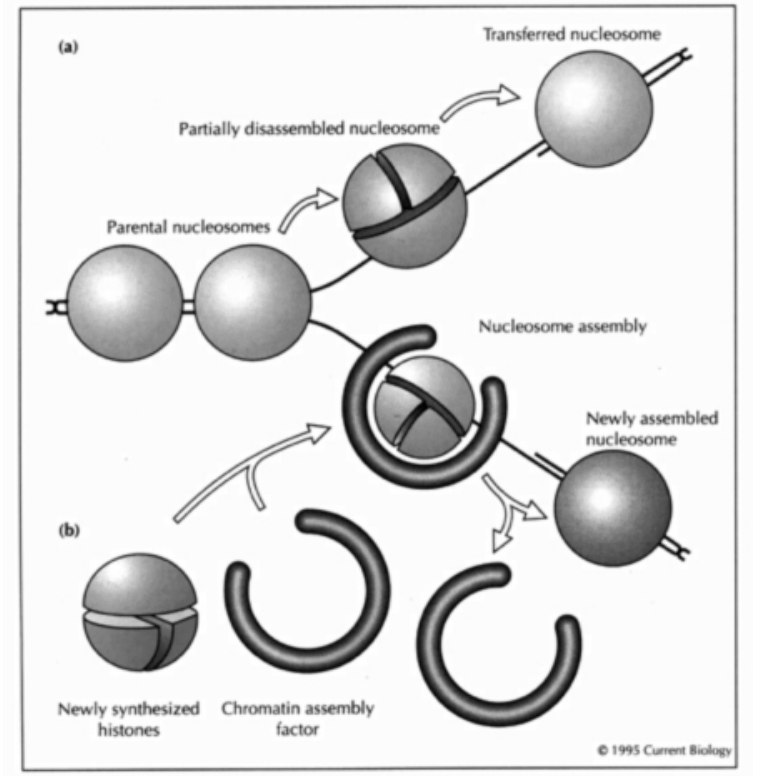
Histones and DNA can, in principle…
self assemble to form nucleosome cores
but…
THis process is mediated by…
other proteins in the cell
Example: Xenopus embryos
proteins called N1 and nucleoplasmin
associated with histones
will assemble nucleosome cores at physiological ionic strength in vitro
Example: in human and other cells (SV40)
Chromatin assembly factor CAF-1
facilitiates replication-dependent nucleosome assembly in the SV40 replication system
How does it do this
interacts with replication fork protein PCNA
targets newly synthesised histones H3 and H4 to the replication fork
Other assembly proteins
Asf1 and NAP-1/2
act synergistically with CAF-1 to assemble entire new nucleosomes
What happens to old tetramers of histones H3 and H4
stay together during replication
after transfer to a replicated DNA daughter strand
can associated with either new or old dimers of histones H2A and H2B
Linker hitones H1 associate later and higher order strucutres are forme
v
Chromatin remodelling
Once assembled, chromatin fibres are not static:
Factors remodel chromatin in an ATP-dependent manner
slide nucleosomes along the DNA fibre
These remodelling factors are usually…
large multi-subunit complexes
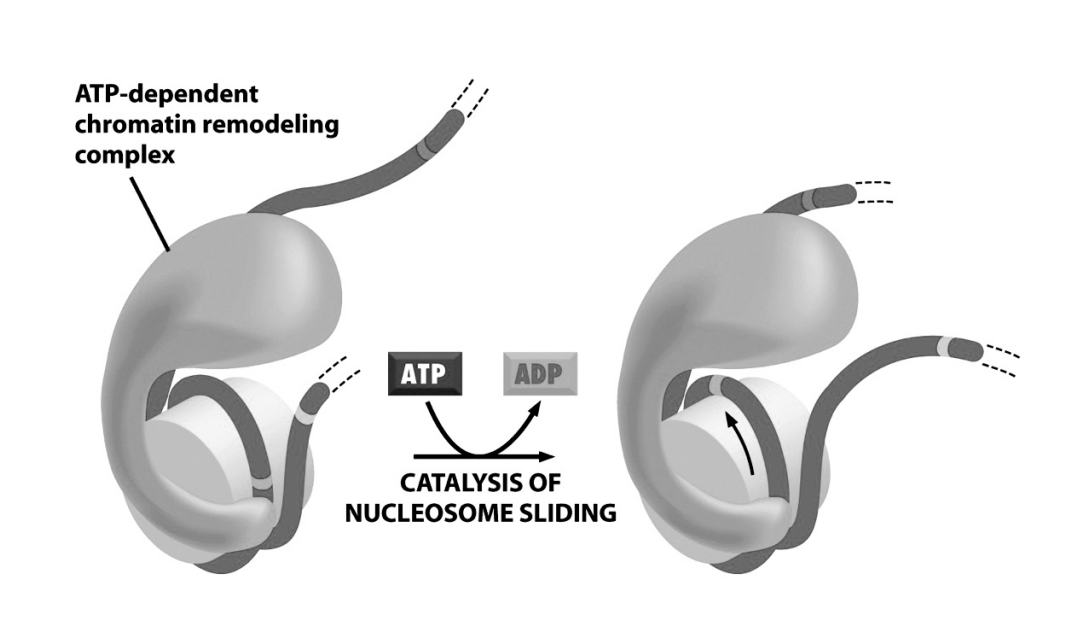
Several remodelling factors can…
exchange (and evict) histones within assembled nucleosomes
utilising histone chaperones as co-factors
What does this allow for?
an exchange of histone types or reprogramming of epigenetic marks
e.g histone modifications
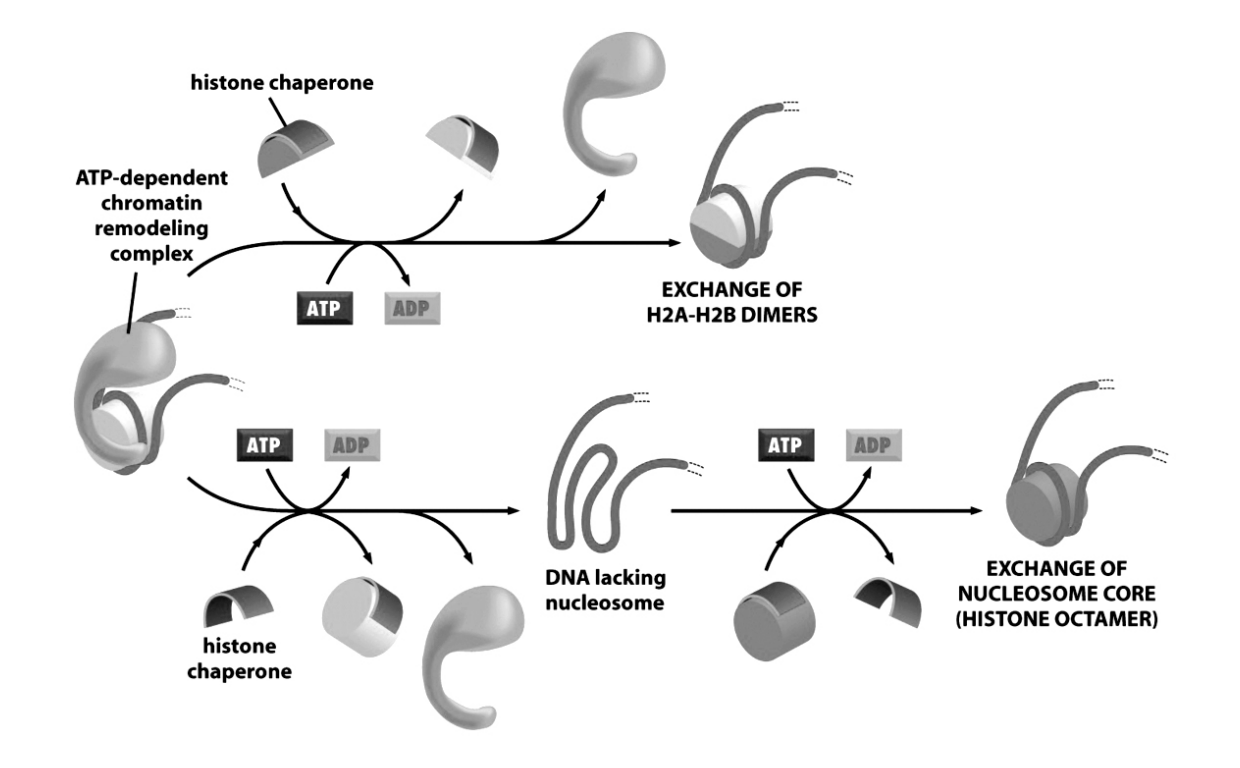
Overall: chromatin remodelling allows…
chromatin fibre to be dynamic
therefore→ can react to metabolic requirements arising from:
DNA replication, repair and transcription
A mechanistic feature of this is that…
DNA binding factors will thus be able to gain access to sites on DNA
which might be otherwise occluded by nucleosomes